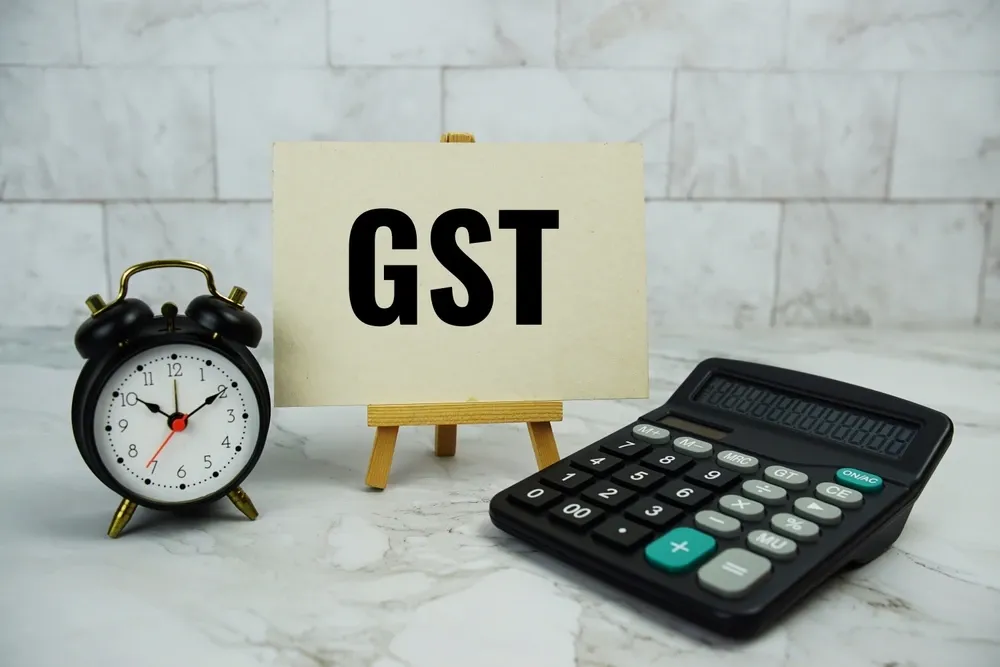Business News
GST Council to decide on tax cuts on insurance premium; big-ticket rate rejig unlikely

5 min read | Updated on December 21, 2024, 10:07 IST
SUMMARY
The GST Council is likely to decide on reducing insurance premium taxes, with no major rate changes expected. It will also discuss including Aviation Turbine Fuel (ATF) under GST, rate hikes on used EVs, and adjustments to 148 items' taxes.

October 2024 recorded the second-best GST mop-up.
The GST Council, in its meeting on Saturday, is likely to decide on reducing tax rates on life and health insurance premiums, but a decision on big-ticket rate rationalisation, including a higher tax on sin goods, may be deferred.
The GoM on GST rate rationalisation had proposed rate rejigs in 148 items in its recommendations, but sources said that consensus is needed to be built on some of the tax changes that the panel has suggested and some more time may be needed for that.
The 55th meeting of the GST Council, chaired by Union Finance Minister Nirmala Sitharaman and comprising state counterparts, is also likely to deliberate on bringing Aviation Turbine Fuel (ATF), a major component for airline industry's operation cost, in the Goods and Services Tax (GST) fold.
The GST rate is also proposed to be cut on food delivery platforms like Swiggy and Zomato, to 5% (without input tax credit), from the current 18% (with ITC).
However, the Fitment Committee (comprising tax officers from the Centre and states) is likely to have proposed a rate hike to 18% on sale of used EVs as well as small petrol and diesel vehicles to 18% from the current 12%.
This hike would bring used and old smaller cars and EVs at par with old larger vehicles, according to sources.
Additionally, the Group of Ministers (GoM) on GST compensation cess is likely to get a six month extension till June, 2025, to submit its report.. The compensation cess regime comes to an end in March, 2026, and the GST Council has set up a panel of ministers, under Union Minister of State for Finance Pankaj Chaudhary, to decide the future course of the cess.
In the GST regime, compensation cess at varied rates is levied on luxury, sin and demerit goods over and above the 28% tax. The proceeds from the cess, which was originally planned for five years after GST roll-out or till June 2022, was used to compensate states for revenue loss incurred by them post the introduction of GST.
One of the major items on the agenda of the Council is to decide the GST rate on health and life insurance. A GoM set up by the Council under Bihar Deputy Chief Minister Samrat Chaudhary, in its meeting in November had agreed on exempting insurance premiums paid for term life insurance policies from GST.
Also, premium paid by senior citizens towards health insurance cover has been proposed to be exempted from the tax.
Besides, GST on premiums paid by individuals, other than senior citizens, for health insurance with coverage of up to ₹5 lakh is proposed to be exempted.
A final decision of the insurance taxation under GST is likely on Saturday as most states are in favour of lowering taxes on premium.
Another major item before the Council is the GST rate rationalisation panel's report, which has suggested rate tweaks in 148 items.
The GoM on GST rate rationalisation earlier this month decided to submit before the Council its recommendation to hike tax on sin goods, like aerated beverages, cigarettes, tobacco and related products, to 35% from the present 28%.
The four-tier tax slab of 5, 12, 18 and 28% under GST will continue and a new rate of 35 per cent is proposed by the GoM only for sin goods.
The Group of Ministers on rate rationalisation, under Bihar Deputy Chief Minister, also decided to propose rationalising tax rates on apparel. As per the decision, ready-made garments costing up to ₹1,500 would attract 5% GST, those between ₹1,500 to ₹10,000 would attract 18%.
Garments costing above ₹10,000 would attract 28% tax.
Currently, garments costing up to ₹1,000 attract 5% GST, while those above that attract 12%.
The GoM also proposed hiking GST on shoes above ₹15,000/pair from 18% to 28%.
It also proposed hiking the GST rate on wrist watches above ₹25,000 from 18% to 28%.
"Some of the low hanging fruits in the 148 items that rate rationalisation panel has suggested may be decided in tomorrow's meeting. But, no major big-ticket rate rationalisation is expected," an official said.
Asked about his views on rate rationalisation and whether he is in favour, Telangana Deputy Chief Minister Mallu Bhatti Vikramarka said, "Taxation system should be more flexible and not be a burden on people. We will present our views tomorrow".
The GoM had proposed reducing GST on packaged drinking water of 20 litre and above to 5% from 18%, and reducing tax rate on bicycles costing less than ₹10,000 to 5%, from 12%. Also, GST on exercise notebooks would be reduced to 5% from 12%.
In total, the GoM on rate rationalisation has proposed tax rate tweaks in 148 items to the GST council.
"The net revenue impact of rate rejigs will be positive," an official had said earlier.
With regard to bringing ATF in GST, the Council is likely to deliberate the timeline and build consensus among states.
When GST was introduced on July 1, 2017, amalgamating over a dozen central and state levies, five commodities including crude oil, natural gas, petrol, diesel, and aviation turbine fuel (ATF), were included in GST law, but it was decided that it would be taxed under GST at a later date.
About The Author
Next Story

